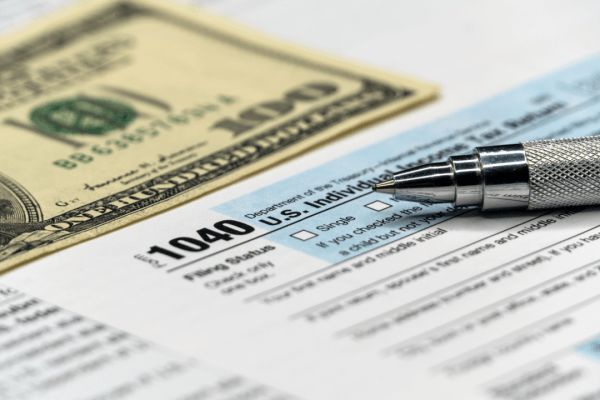
Tax Debt Elimination Program: What It Is and How to Apply
Tax Debt Elimination Program: IRS Relief Options Explained
A tax debt elimination program is a government-approved way for taxpayers to reduce, settle, or remove IRS debt under specific conditions. While the IRS rarely “forgives” all debt outright, it does offer several relief options for those who qualify based on financial hardship, low income, or exceptional circumstances. These programs can help you avoid garnishments, levies, and other aggressive IRS collection actions—if you know how and when to apply.
What Is a Tax Debt Elimination Program?
Tax debt elimination doesn’t mean your balance disappears overnight. Instead, it refers to a collection of formal IRS programs designed to lower your debt burden or temporarily halt collection.
Overview of IRS Debt Relief Options
The IRS offers legal ways to reduce or eliminate tax debt through:
- Compromise settlements
- Payment deferrals
- Penalty waivers
These options fall under what’s generally known as a “tax debt elimination program.”
Difference Between Elimination and Forgiveness
- Elimination often refers to programs like Offers in Compromise (OIC) that settle your debt for less than you owe.
- Forgiveness applies when debt is discharged due to insolvency, bankruptcy, or expiration of the collection period.
Types of Programs (OIC, CNC, Penalty Abatement)
Popular IRS programs used for debt elimination include:
- Offer in Compromise (OIC)
- Currently Not Collectible (CNC) status
- First-Time Penalty Abatement
- Partial Payment Installment Agreements
You can explore more details on each program via our tax debt relief overview.
Who Qualifies for Tax Debt Elimination?
Eligibility is based on your financial condition, household income, tax compliance history, and specific hardship factors.
Financial Hardship and Income Guidelines
You may qualify if:
- You can’t pay the full balance due
- Your income barely covers basic living expenses
- You’re receiving Social Security, disability, or unemployment
Supporting Documentation Requirements
To apply, you’ll need:
- Proof of income and expenses
- A full list of assets and liabilities
- Bank statements, pay stubs, and housing costs
- Prior-year tax returns
For assistance gathering documentation and understanding relief qualifications, consult with a licensed tax expert.
Special Cases: Disability, Retirement, Low-Income
Taxpayers who are elderly, permanently disabled, or earning below the federal poverty threshold are more likely to qualify for elimination or deferral.
IRS Programs That Can Eliminate or Reduce Debt
The IRS offers several formal programs designed to provide relief to struggling taxpayers.
Offer in Compromise (OIC)
An Offer in Compromise allows eligible taxpayers to settle their debt for less than the full amount owed. The IRS considers your income, expenses, equity, and ability to pay. Learn how Legal Brand Marketing connects taxpayers with attorneys who specialize in OIC filings.
Currently Not Collectible (CNC) Status
If the IRS agrees that paying your tax bill would cause financial hardship, it can mark your account as Currently Not Collectible. This pauses collection and enforcement activity.
Partial Payment Installment Agreements
This option allows you to pay a reduced amount over time. Once the collection period expires (usually 10 years from assessment), any remaining balance may be eliminated.
First-Time Penalty Abatement
If this is your first time falling behind, you may be eligible for a penalty abatement. This can remove failure-to-file or failure-to-pay penalties if you meet the criteria.
How to Apply for a Tax Debt Elimination Program
Applying takes preparation, accuracy, and patience. Mistakes or missing documents can delay or deny relief.
Required IRS Forms (656, 433-A/B, 843, etc.)
- Form 656: Used for submitting an Offer in Compromise
- Form 433-A/B: Used to disclose financial information
- Form 843: Used to request penalty abatement
Gathering Financial Information
You’ll need to provide:
- Monthly income and expenses
- Asset values (home, vehicles, investments)
- Debts (loans, credit cards, court judgments)
Using incorrect or outdated information can result in immediate denial, so consider working with a tax professional to get it right the first time.
Getting Help From a Tax Professional or Attorney
Tax relief programs are complex. A licensed tax expert can:
- Evaluate your eligibility
- Help you prepare IRS forms correctly
- Communicate with the IRS on your behalf
- Increase the chances of approval and reduce risk of rejection
A Tax Debt Elimination Program May Offer Real Relief If You Act Early
The tax debt elimination program isn’t a one-size-fits-all solution, but it can offer significant relief when used correctly. By submitting the right forms, showing financial hardship, and acting early, you can stop the IRS from escalating its collection efforts and possibly resolve your tax debt for less than the full amount owed.
Need Help With a Tax Debt Elimination Program? Speak to a Tax Relief Expert
If you’re overwhelmed by IRS debt, don’t wait for garnishments, liens, or levies to begin. A licensed tax professional can walk you through your options, file the correct forms, and help you avoid costly mistakes.
Contact us today at TaxDebtLawyer.net to start your tax debt relief process with expert guidance and peace of mind.
Frequently Asked Questions (FAQs)
1. What is a tax debt elimination program and does the IRS offer one?
Yes. The IRS offers legal programs like Offers in Compromise and CNC status that can reduce or pause your debt based on financial hardship.
2. Can I really settle my IRS debt for less than I owe?
Yes, if you qualify for an Offer in Compromise and demonstrate that you can’t afford to pay the full balance.
3. What is the difference between CNC status and OIC?
CNC status pauses collections due to hardship. OIC settles your debt for less than the full amount owed.
4. Do I need a lawyer to apply for a debt elimination program?
Not necessarily, but working with a tax attorney or enrolled agent can improve your chances and ensure you follow IRS procedures correctly.
5. How long does it take to be approved for IRS debt relief?
It can take several months. Offer in Compromise reviews typically take 4 to 6 months or more, depending on case complexity.
Key Takeaways
- A tax debt elimination program includes IRS tools like OIC, CNC, and penalty relief.
- You must prove financial hardship and submit complete documentation.
- Settlement may be possible for less than what you owe.
- Proper forms and timely filing are crucial to success.
- Tax professionals can help navigate complex IRS procedures.
Free Tax Case Review
If you are struggling with tax debt or have received a letter from the IRS complete the form below.IRS Audit
You received an audit notice from the IRS
Tax Debt Relief
You owe the IRS money and are looking for relief options
Wage Garnishment
The IRS is taking part of your wages to pay off your debt
Tax Lien
The IRS put a legal claim on your property
IRS Property Seizure
The IRS is going to take your property to pay down or pay off your tax debt
Penalty Abatement
You want to request to remove or reduce penalties assessed by IRS
Innocent Spouse Relief
Relief from joint tax debt caused by your spouse or former spouse
Tax Debt FAQ
Common facts, questions and answers about tax debt and tax debt reilef
Tax Debt Lawyer
A tax debt lawyer can help you with your tax debt problems
Recent Posts
- How Do I Settle a Debt Lawsuit | Your Complete Resolution Guide
- Can You Dispute a Debt if it Was Sold to a Collection Agency?
- Is It Better to Settle a Debt or Go to Court?
- Debt Collection and Lawsuits | A Complete Guide to Your Rights and Legal Options
- Will the IRS Really Settle for Less? The Truth About Tax Debt Settlement



